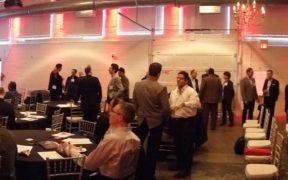Author: Amna Chishty

iBwave’s 2015 North American User Group
December 22, 2015
Earlier this month we were in Toronto for our annual North American User Group. As always we had an action packed day planned with a panel discussion, interactive sessions, presentations and case studies. To top it all off, we lined up special sneak peeks into what’s coming in 2016 complete with live demos. View of […]
chat_bubble0 Comment
visibility2225 Views

Fun In-Building Times in Chicago
October 30, 2014
The wireless world might be fast-paced but it is also A LOT OF FUN and let’s be honest, nothing is more gratifying that to know that your technology can have a significant impact in the way people interact in their everyday life. QUICK FLASHBACK: In February last year, iBwave’s software tools were selected by AT&T to enhance the network capacity […]
chat_bubble0 Comment
visibility1853 Views

